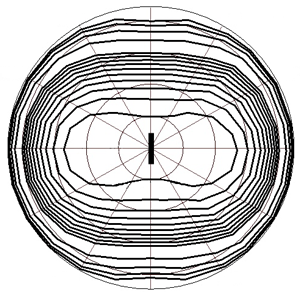Characteristics of directivity of vibrator antennas placed parallel to flat screen
DOI:
https://doi.org/10.1109/ICATT.2017.7972634Keywords:
electromagnetic wave, Hertz dipole, half-wave vibrator, directional pattern, coefficient of directivityAbstract
The directivity diagrams of the Hertz dipole and a half-wave vibrator, which are situated parallel to the plane perfectly conducting infinite screen, are determined in the entire front half-space. It is shown that the width of the main lobe of the directivity pattern is increased when the radiator height above the screen is increased. After comparison with the known results it is proved that the calculation of the coefficient of directivity, which was obtained by integrating the directivity pattern over the entire space, made it possible to provide high accuracy of the calculation. It is also shown that the maximum of the coefficient of directivity of the Hertz dipole and the half-wave vibrator above the screen in the direction of the normal to the screen is equal to four times of the coefficient of directivity of these radiators in the free space.References
N. Yeliseyeva, N. Gorobets, Diffraction of Radiation of the wire antenna in the rectangular and corners screens. Kharkiv: Karazin Kharkiv National University, 2009.
S. Schelkunoff and H. Friis, Antennas Theory and Practice. New York: John Wiley & Sons, 1952.
A. Bulgakova, N. Gorobets, V. Katrich, V. Lyashchenko, “Directivity of antenna arrays,” Radiophysics and Radioastronomy, vol. 21, pp. 285-297, 2016.
Yu. Murav’ev, Guide to the calculation of wire antennas [in Rissian]. Leningrad, MAT, 1978.
A. V. Nechosa, “Superwide-band signal distortion caused by linear dipole antennas,” Telecommun. Radio Eng., vol. 53, no. 3, pp. 36-41, 1999. DOI: http://doi.org/10.1615/TelecomRadEng.v53.i3.70.

Published
2017-07-17
Issue
Section
UWB, low-gain, communication and printed antennas
